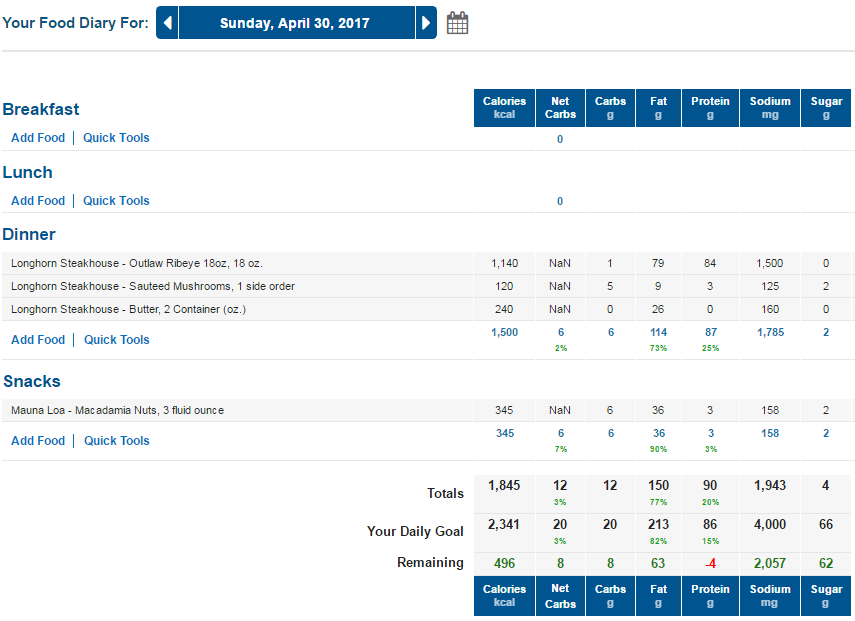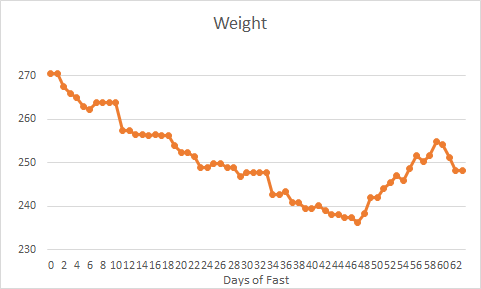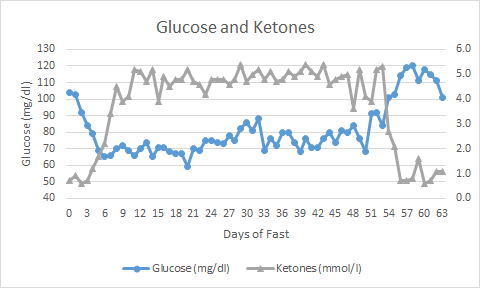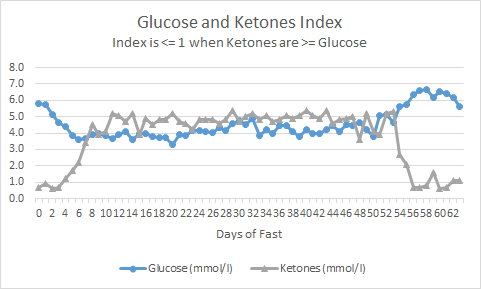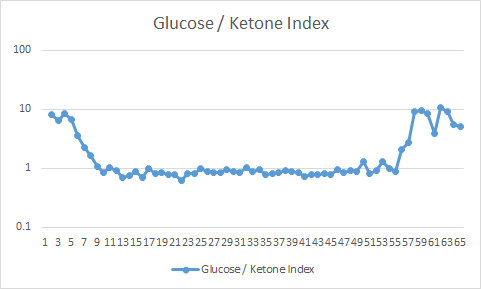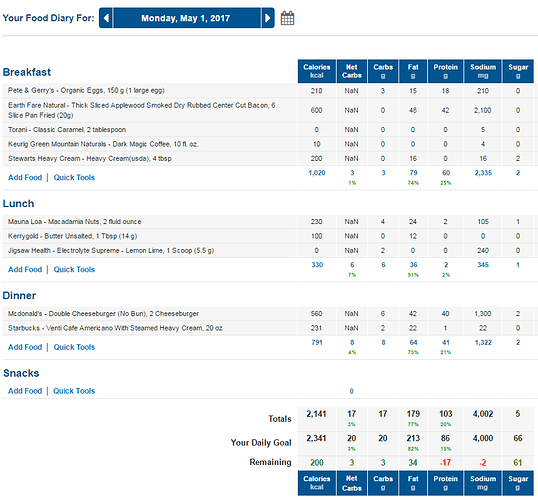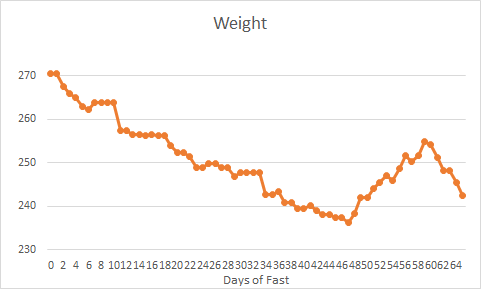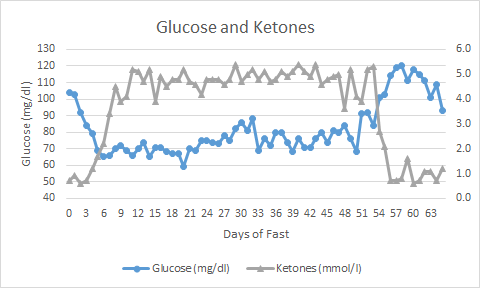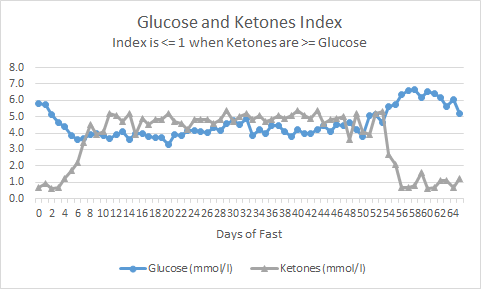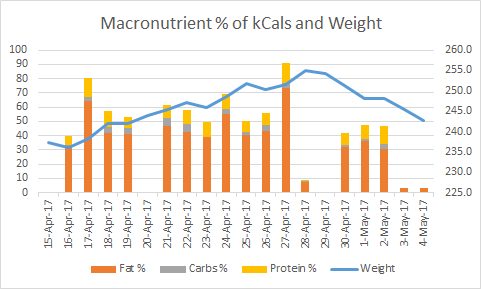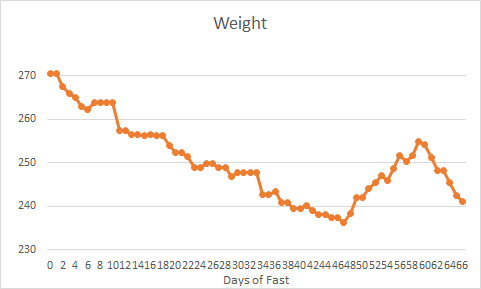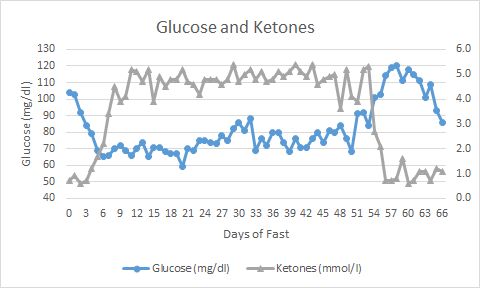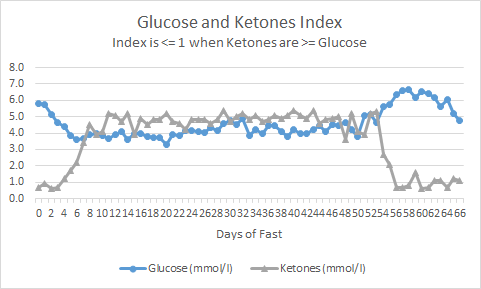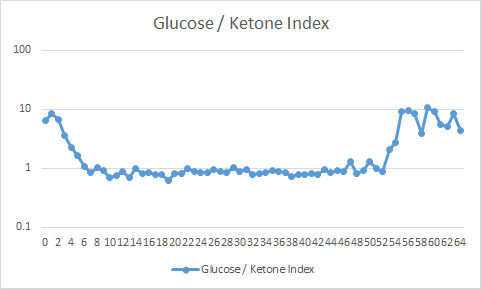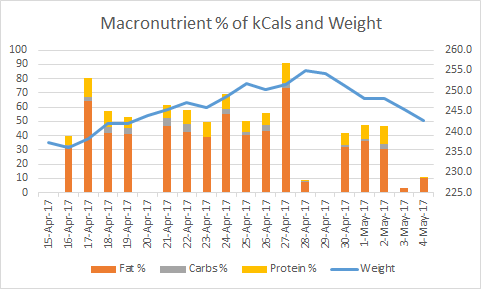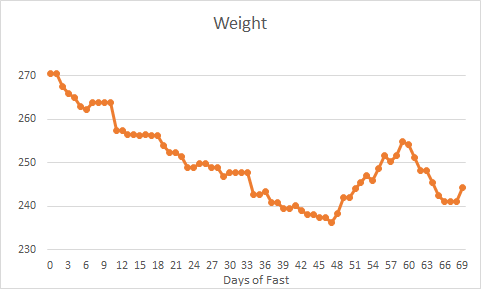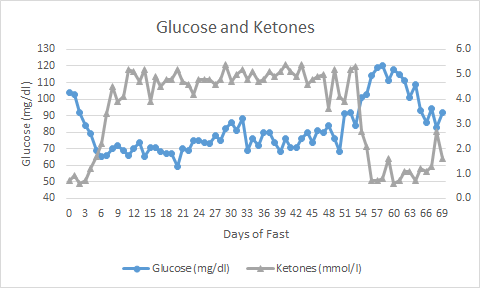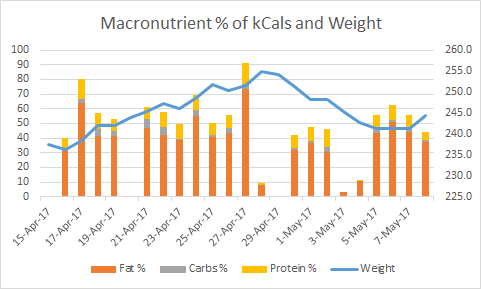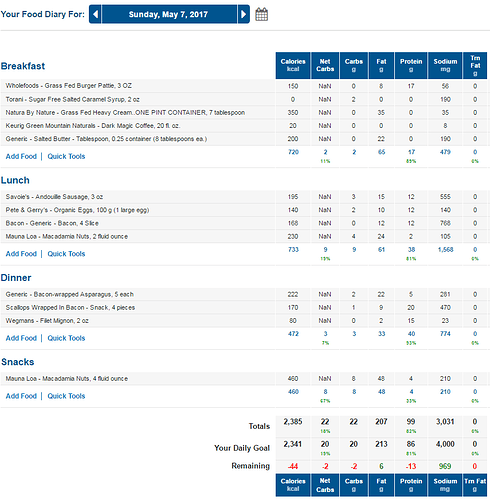Day 62 of my experiment, on my first feast day after a 3-day fast. I did miss my update post yesterday and I ended my fast at about the 71 hour point with a nice bone-in ribeye from Longhorn! Here are my numbers for today:
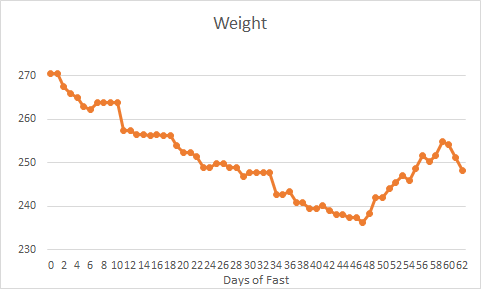
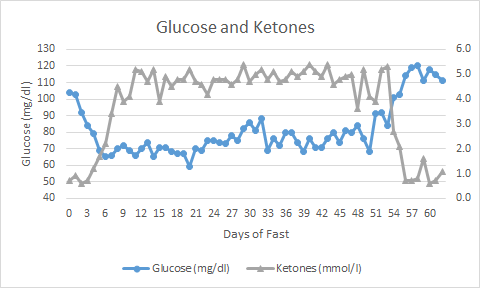
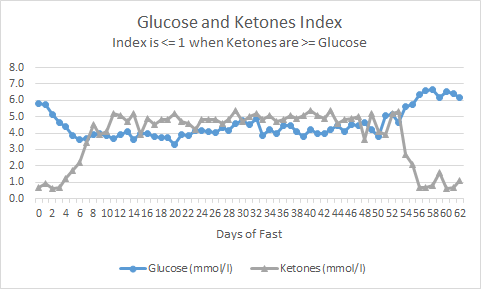
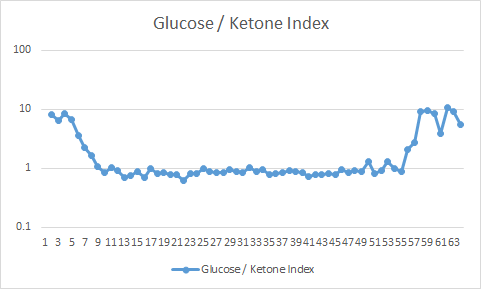
Working with my wife’s scheduled we had a coupon for Longhorn that expired today but we didn’t have time to go there today so decided to use the coupon yesterday. Tomorrow we are doing a 6-hour round trip to see our oldest granddaughter before she leaves college to go home for the summer. I am working this fast/feast cycling around my personal schedule so I will get to ‘switch it up’ on a regular basis and still fit most personal plans into my eating.
My glucose numbers were still high for me today so I will feast for about 48 hours, ending Tuesday after a late lunch with our granddaughter, and then fast about 72 hours until Friday evening or so when we are on our anniversary trip together. As I said, I am using the cycling thing to include all of the fasts I want around all of the personal events that happen! This will make life a lot easier.
My wife’s only request is that I let her know when I am fasting so she can make her plans as well. I am trying to do most of my fasting during the week but with the busy weekends we often have it doesn’t really matter which days I choose, it will work out. Being that the intention is to cycle, I will not always do 48 or 72 hours like I am beginning but I will look into anywhere from 1 to possibly 4-days for each cycle and change them up often.
I read a couple of interesting articles over the weekend that I may incorporate into my plans as well. First, a May 2008 blog from Dr. Michael Eades, the co-author of “Protein Power,” whom is one of the experts I really enjoy reading. I will post the links as comments on my Facebook posts.
Dr. Eades talks about the LCHF diet ant the tendency for people to think that as long as the foods they are eating are high in fat and very low in carbohydrates then they must all be good—but this is far from the truth. We do need to be reasonable with what we eat and I really like the term he used for ‘hedonistic’ snacking! Yes, I can identify with that: snacking for the pure self-gratification and pleasure of snacking!
He mentioned that the worse snack items are cheese and nuts—again, I can identify with those 2 right away. I remember many times hearing Dr. Stephen Phinney casually mention that we need to limit cheese to no more than 4 ounces a day and about 2-3 ounces of nuts as well.
Why do we need to limit these? Because they are a slippery slope, like Lay’s potato chips “You can’t eat just one!” Oh yes, let me tell you, I can easily sit down and eat ounce after ounce of nuts or cheese. Cheese actually fills me up faster but put me at a manager’s evening event in a hotel and I can go for a good plate of those cheese cubes. Knowing that 3 cubes is about an ounce I should limit myself to no more than 9 cubes: well, that is good for the first plate! And what about the cheese I had on my omelet that morning, or the cheeseburger, with extra cheese since I’m on the ketogenic diet, I had for lunch? Did I just ‘forget’ about all that cheese as well?
Nuts are a whole other thing, they don’t fill me as well as cheese does so I could probably go through a whole 11 ounce bag of macadamias in one sitting or even spread out over a day. And who says that I couldn’t do both excessive nuts and cheese in the same day? So, what to do about this hedonistic snacking? What is the best answer?
I have set out to be very honest with tracking what I eat in MyFitnessPal. I am also determined to STOP SNACKING and include these, purely pleasurable, trouble foods in my normal meals only. This way I am maintaining accountability to myself just like these daily updates do for me as well.
I have been successful for the last week or so and I am hoping that the fast/feast cycling will help me stay in line as well.
Oh yes, I am not the only one that has this misconception, in a June 2008 follow-up to the original blog, Dr. Eades begins with a letter from an exasperated dieter:
A lady from New England wrote to us complaining that she had diligently followed our low-carb diet to the letter yet, had lost only four pounds over the first few weeks of the program. She included her food diary to show that she was indeed doing a low-carb diet. Here it is:
BREAKFAST: a four-egg omelet with cream cheese, five or six pieces of bacon or sausage, and coffee.
MID-MORNING SNACK: 4 ounces of nuts and 2 to 4 ounces of cheese.
LUNCH: a large bowl of tune or ham or chicken salad make with real mayonnaise, a bag of pork rinds, and a diet drink.
MID-AFTERNOON SNACK: nuts and cheese again.
DINNER: a 16 ounce piece of prime rib, a green vegetable, and a small salad.
DESSERT: sugar-free gelatin and whipped cream and coffee.
When we received this letter MD [Ron - Mary Dan his wife and co-author] and I wanted to shake this woman and say: Does it not surprise you that you’re not gaining weight on your diet? I’m sure the only reason she lost the 4 pounds was that she dumped a bunch of excess fluid as a result of her insulin falling. If you run the calculations you will find that this woman was eating somewhere around 5,000 calories per day. She was definitely not creating a deficit. And she wasn’t losing…but she wasn’t gaining either.


